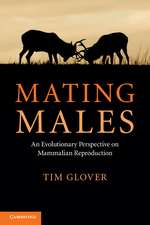Spontaneous Alternation Behavior
Editat de William N. Dember, Charles L. Richmanen Limba Engleză Paperback – 21 oct 2011
Preț: 383.93 lei
Nou
Puncte Express: 576
Preț estimativ în valută:
73.47€ • 78.56$ • 61.25£
73.47€ • 78.56$ • 61.25£
Carte tipărită la comandă
Livrare economică 17 aprilie-01 mai
Preluare comenzi: 021 569.72.76
Specificații
ISBN-13: 9781461388814
ISBN-10: 1461388813
Pagini: 224
Ilustrații: XI, 211 p.
Dimensiuni: 155 x 235 x 12 mm
Greutate: 0.32 kg
Ediția:Softcover reprint of the original 1st ed. 1989
Editura: Springer
Colecția Springer
Locul publicării:New York, NY, United States
ISBN-10: 1461388813
Pagini: 224
Ilustrații: XI, 211 p.
Dimensiuni: 155 x 235 x 12 mm
Greutate: 0.32 kg
Ediția:Softcover reprint of the original 1st ed. 1989
Editura: Springer
Colecția Springer
Locul publicării:New York, NY, United States
Public țintă
ResearchCuprins
1: Historical Overview.- 2: The Search for Cues and Motives.- 3: Phylogenetic Comparisons.- 4: SAB, Reward, and Learning.- 5: Spontaneous Alternation Behavior and the Brain.- 6: Neurochemical and Neuroanatomical Correlates of Behavioral Habituation and Sensitization: An Overview and Elaboration of Animal Experimentation.- 7: Ontogeny of Spontaneous Alternation Behavior.- 8: Using SAB as a Tool: Advice from a Veteran.- References.- Author Index.








